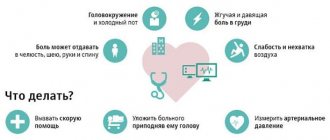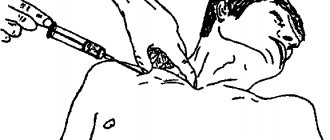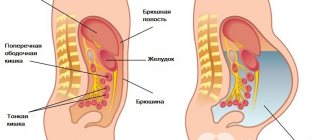In the area of the diencephalon, under the tubercles responsible for vision, is the hypothalamus (diencephalon), which regulates the functioning of the neuroendocrine and autonomic nervous systems. The smooth functioning of the body is ensured by the pituitary gland, a gland that produces hormones for normal hemostasis. Hypothalamic dysfunction is the cause of failure of endocrine and metabolic processes and, as a consequence, disorientation of the central nervous system in any area of activity.
Disruption of the hypothalamic-diencephalic part of the brain entails an increase in body weight, temperature imbalance, inferior reproductive function, hormonal imbalances, growth pathologies, and disturbances in sleep and wakefulness. Hypothalamic syndrome (HS, HTS) combines a type of symptomatology that reflects a disorder of almost all body functions, so the anomaly is difficult to diagnose. Women under forty and adolescents during puberty are susceptible to pathological changes.
Classification
Etiological classification of the syndrome:
- Primary type - a consequence of neuroinfection or traumatic brain injury,
- The secondary type develops with nutritional obesity,
- Mixed type.
Forms of the disease according to clinical symptoms:
- The vegetative-vascular form is considered the most common and is characterized by signs of damage to the autonomic nervous system and changes in vascular tone: hypersalivation, tachycardia, pressure changes, hot flashes, respiratory failure;
- The form with impaired thermoregulation is characterized by sudden rises in body temperature, chills, hyperhidrosis, attacks of hunger and thirst;
- Diencephalic epilepsy occurs for no reason and is accompanied by anxiety, fear, panic, diarrhea, sweating, insomnia, epigastric pain, cardialgia, tremors of the limbs, rapid heartbeat, epileptic seizures;
- Neurotrophic form - increase or decrease in body weight, swelling, headache, itchy rashes on the skin;
- The neuromuscular form is manifested by muscle weakness, physical asthenia, numbness of the extremities, attacks of pain in the arms and legs, apathy;
- The psychopathological form is characterized by sudden changes in mood, indifference to current events, aggressiveness, causeless anxiety, tinnitus, hallucinosis;
- Psychosomatic form - inability to fall asleep at night, drowsiness during the day, weakness, lethargy;
- The neuroendocrine form is manifested by metabolic disorders, decreased libido, and obesity.
Severity of the syndrome:
- Mild – the patient feels satisfactory, conservative treatment of endocrinopathies is carried out;
- Moderate - severe condition of patients, complex and complex therapeutic measures;
- Severe - patients require surgical intervention.
The nature of the development of pathology:
- Progressive – increased symptoms, serious condition of patients;
- Stable - the patient’s condition does not change;
- Regressive - reduction in the severity of symptoms, improvement in the condition of patients;
- Recurrent - resumption of symptoms and deterioration of the patient’s condition after therapeutic measures.
Examination and diagnosis
Diagnostic methods for determining the syndrome can include many different variations, since the symptoms affect most of the body systems.
To effectively diagnose the syndrome, use:
- Magnetic resonance imaging of the pituitary gland or the entire brain.
- Biochemical and hormonal blood tests.
- Ultrasound of the liver. This method is effective in cases associated with metabolic disorders.
- Ultrasound of the thyroid gland in conjunction with blood tests gives an effective and very indicative result in diagnosis.
- Adrenal gland research. A technique is used to determine the disease by the missing adrenal hormones in the blood.
- Various methods for examining the heart. Often with hypothalamic syndrome, the heart is subject to a painful disorder.
Etiology
Causes of hypothalamic syndrome:
Brain tumors that compress the hypothalamus and disrupt its functions;- Traumatic brain injury with direct effects on the hypothalamus;
- Neurointoxication of the body due to the use of drugs, alcohol, exposure to toxic substances, industrial hazards;
- Destructive-degenerative diseases of the spine;
- Infectious diseases of the nervous system of viral or bacterial etiology;
- Stressful and conflict situations;
- Hormonal imbalance during pregnancy;
- Increased pressure on the hypothalamus due to excess fluid in the skull;
- Genetic predisposition;
- Brain hypoxia due to suffocation, drowning.
In children, the causes of the syndrome are often: birth trauma, intrauterine infection, insufficiency of the blood-brain barrier, fetal hypoxia.
Factors provoking the occurrence of paroxysms:
- Sudden change of weather
- Emotional outburst,
- Menses,
- Physical stress
- Acute pain.
Forecast
With timely treatment, childhood and adolescent hypothalamic syndrome most often goes away completely by the age of 20-23 without any negative consequences for health. In adults, the prognosis is less favorable, since the pathology threatens to slightly reduce the ability to work (up to the assignment of the 3rd or 2nd disability group to the patient). This “inequality” is explained by hormonal changes in the growing body and large (relative to other age categories) internal protective resources.
Similar syndromes:
Symptoms
The variety of clinical symptoms of hypothalamic syndrome is due to the many functions that this highest regulatory organ of the autonomic nervous system performs.
The hypothalamus provides neurohumoral regulation of the basic functions of the body, maintains metabolism at an optimal level, vascular tone and the functioning of internal organs, regulates the processes of heat production and heat transfer, blood pressure levels, water-salt balance, nutritional and sexual behavior, coordinates mental activity and physiological reactions.
Clinical signs of the disease
Symptoms of hypothalamic syndrome appear immediately after damage to this organ or after several months or even years. The clinical picture of the pathology is diverse and polymorphic. Armed with numerous and varied symptoms and signs indicating hypothalamic syndrome, one or another form of this pathology can be diagnosed.
- Autonomic disorders occur when there is dysfunction of internal organs and systems due to a violation of their nervous regulation. From the cardiovascular system - tachycardia, surges in blood pressure with a tendency to hypertension, discomfort and stabbing pain in the heart, pulse lability. On the part of the respiratory system - rapid breathing, feeling of lack of air, dizziness, shortness of breath, dissatisfaction with breathing. From the gastrointestinal tract - nausea and vomiting, a feeling of a lump in the throat, spasmodic and aching pain in the lower abdomen, alternating aversion to food and excessive gluttony, changes in body weight down or up, frequent urge to defecate, increased gas formation, unstable stool with a predominance of diarrhea . General autonomic disorders include: muscle spasms, numbness of the extremities, hyperhidrosis of the palms and soles, increased fatigue, hyperreflexia, abnormal skin reaction, acute reaction to changes in weather, psychophysical exhaustion.
- Signs of endocrine disorders are diabetes insipidus, acromegaly, hyper- or hypothyroidism, impaired erectile and ejaculatory function in men, anorgasmia in women, decreased libido, and the appearance of bright blue-purple stripes on the skin of the abdomen and thighs.
- Trophic disorders - dystrophic changes in bones and muscles, dryness and flaking of the skin, ulceration of the mucous membrane of internal organs, allergic skin rash.
- Metabolic dysfunctions - metabolic disorders of proteins, carbohydrates, fats, minerals, bulimia, anorexia, thirst, a characteristic pungent odor of sweat, hair loss or hypertrichosis, changes in parameters in blood tests.
- Violation of thermoregulation - intolerance to drafts, wearing clothes that are not suitable for the weather, prolonged low-grade fever with periodic rise in body temperature to high numbers. This form usually develops in adolescents, is characterized by the absence of signs of inflammation in the body and develops after psycho-emotional stress or stress.
Hypothalamic syndrome of puberty is classified as a separate form. It develops in adolescents aged 12-15 years and is manifested by excess weight, general malaise, early appearance of secondary sexual characteristics, insatiable hunger, decreased performance, depressive psychosis, and the appearance of stretch marks on the skin. Sick teenagers grow and develop faster than their peers, and they develop areas of hyperkeratosis where clothing comes into contact with the skin. In girls, the menstrual cycle is disrupted. Their fat is deposited on the chest, buttocks, pubis, and neck. Boys acquire feminine features and hair does not grow on their face for a long time.
The cause of juvenile syndrome is a hormonal imbalance that occurs during puberty in all children. The risk group includes:
- Teens who start having sex early
- Girls who became pregnant early and had several abortions
- Obese children
- Teenagers taking anabolic steroids
- Children are drug addicts.
Hypothalamic crises
Hypothalamic crises are attacks or paroxysms that occur suddenly and unexpectedly, often in the evening or at night.
- Vagoinsular crisis is accompanied by bradycardia, hypotension, tinnitus, and weakness. Patients often feel feverish and feel a rush to the face and head. Unpleasant feelings in the epigastrium range from minor discomfort to severe pain. Low blood pressure always manifests itself as nausea and dizziness. Patients complain of hypersalivation and hyperhidrosis, diarrhea, copious and frequent urination.
- Sympathetic-adrenal crisis is manifested by hypertension, tachycardia, and fever. Patients' mood changes sharply, their head and heart hurt, lethargy, chills, “goose bumps” occur, the heartbeat becomes rapid, the limbs become cold and pale, and the mucous membranes become dry. They are often agitated, restless and fearful.
- A hyperthermic crisis when thermoregulation is impaired is manifested by a sharp rise in temperature to 40 °C, especially in the morning. Taking antipyretic drugs in such cases becomes useless.
- Mixed crises are a combination of symptoms of all of the above forms.
Such crises last from 15 minutes to 3 hours. After them, weakness and weakness remain for a long time.
Diagnostics
Diagnosis of hypothalamic syndrome presents certain difficulties for clinicians. All patients are examined for the presence of external signs of the disorder, the possible causes of the formation of the disease, and the time of appearance of certain symptoms are clarified.
When making a diagnosis, it is necessary to take into account anamnestic data, complaints, physical data and the results of specific tests.
- To determine the sugar curve, blood glucose is measured on an empty stomach and then with a load of 100 g of sugar. The following pathology options are possible: hyperglycemia, hypoglycemia, a double-humped curve with alternating declines and rises, a torpid curve - a sharp rise in glucose at a certain point.
- Three-point body temperature measurement.
- EEG reflects changes in the deep structures of the brain and evaluates their activity.
- MRI of the brain can detect a tumor, consequences of a head injury, and vascular pathologies.
- A blood test for hemogram, biochemical parameters and hormones is carried out for all patients with suspected hypothalamic syndrome.
- Auxiliary methods - ultrasound, CT and MRI of the adrenal glands, thyroid gland, liver.
Neurotrophic form
The neurotrophic form includes various trophic disorders due to damage to the hypothalamus: trophic ulcers, focal or diffuse edema of different parts of the body (especially in combination with vegetative-vascular crises), brittle nails, osteoporosis, osteodystrophy, some types of alopecia /hair loss/. In its pure form, the neurotrophic form is rare, and trophic disorders are included in the structure of other forms of hypothalamic syndrome, more often in the neuroendocrine-metabolic form.
Treatment
Treatment of the disease requires patience, strength and perseverance from patients, and from doctors the best therapeutic techniques available. Patients are advised to follow a diet: eat frequently, in small portions, up to 5 times a day, gradually reducing the calorie content of foods and ready-made meals. Drug therapy includes the use of drugs that improve cerebral circulation, diuretics, vitamins, hormonal and anticonvulsants. Adequate and timely treatment makes the prognosis of the disease favorable. The syndrome in most cases ends in recovery, with the exception of advanced forms.
Diagnosis and treatment of pathology are carried out by specialists in the field of endocrinology, neurology and gynecology. They select a treatment regimen individually for each patient.
- Detoxification - parenteral administration of saline solutions, glucose, saline.
- Adrenolytics – “Reserpine”, “Aminazine”.
- Cholinomimetics – “Kalimin”, “Mestinon”.
- Ganglion blockers – “Benzohexonium”, “Pentamine”, “Dimecoline”.
- Antidepressants - Fluoxetine, Imipramine.
- Anxiolytics – Clonazepam, Xanax.
- Hormonal therapy - ACTH, Prednisolone, Dexamethasone.
- Vascular agents – “Cinnarizine”, “Cerebrolysin”.
- Vasodilators - Cavinton, Actovegin.
- Antihistamines - Diazolin, Cetrin.
- Vitamin therapy.
Non-drug treatment consists of reflexology, physiotherapy, and therapeutic exercises. Patients need to normalize their work and rest schedule, follow a diet, lose weight, take warm and carbon dioxide baths, and visit resorts with a sea or mountain climate.
Surgical intervention is indicated for patients whose causes of hypothalamic syndrome are tumors in the brain or blood clots formed as a result of a head injury.
- Relieving a sympatho-adrenal crisis involves giving the patient a comfortable position that relaxes the muscles; using plant-based sedatives; long-term symptomatic treatment.
- To relieve a parasympathetic crisis, drugs that constrict blood vessels and increase blood pressure are used - “Caffeine”, “Cordiamin”.
Traditional medicine recipes used to treat pathology:
- Burdock root decoction reduces hunger,
- A decoction of blueberry leaves has a mild hypoglycemic effect,
- A decoction of rose hips, hawthorn, and dill normalizes blood pressure.
Prevention
Preventive measures to prevent the development of hypothalamic syndrome:
- Anti-smoking
- Quitting alcohol
- Food enriched with vitamins and microelements,
- Timely treatment of infectious diseases,
- Prophylactic use of sedatives,
- Elimination of provoking factors
- Regularly performing moderate exercise
- Limiting emotional stress,
- Optimal work and rest regime,
- Full sleep
- Normalization of psycho-emotional state.
Timely seeking medical help improves the prognosis of pathology and returns patients to a full life. Otherwise, they develop complications that lead to loss of ability to work and disability of group II or III.
Hypothalamic syndrome is a serious and complex disease, for which timely and correct diagnosis and treatment play an extremely important role. In case of delayed diagnosis and illiterate therapy, life-threatening complications develop: arterial hypertension, diabetes mellitus and myocardial dystrophy.
Complications
Without timely treatment of hypothalamic syndrome, complications may develop in children and adults, such as a constant increase in blood pressure, the risk of developing diabetes, non-inflammatory damage to the heart muscles, uterine bleeding, and polycystic ovaries.
In pregnant women, the course of the disease is somewhat more severe than in adolescents and adults, since during this period there is already a hormonal imbalance in the female body. The consequence of the disease may be a disruption of the normal functioning of the placenta, which is responsible for feeding the fetus and eliminating harmful substances. Intrauterine developmental disorders of the baby are often observed.











